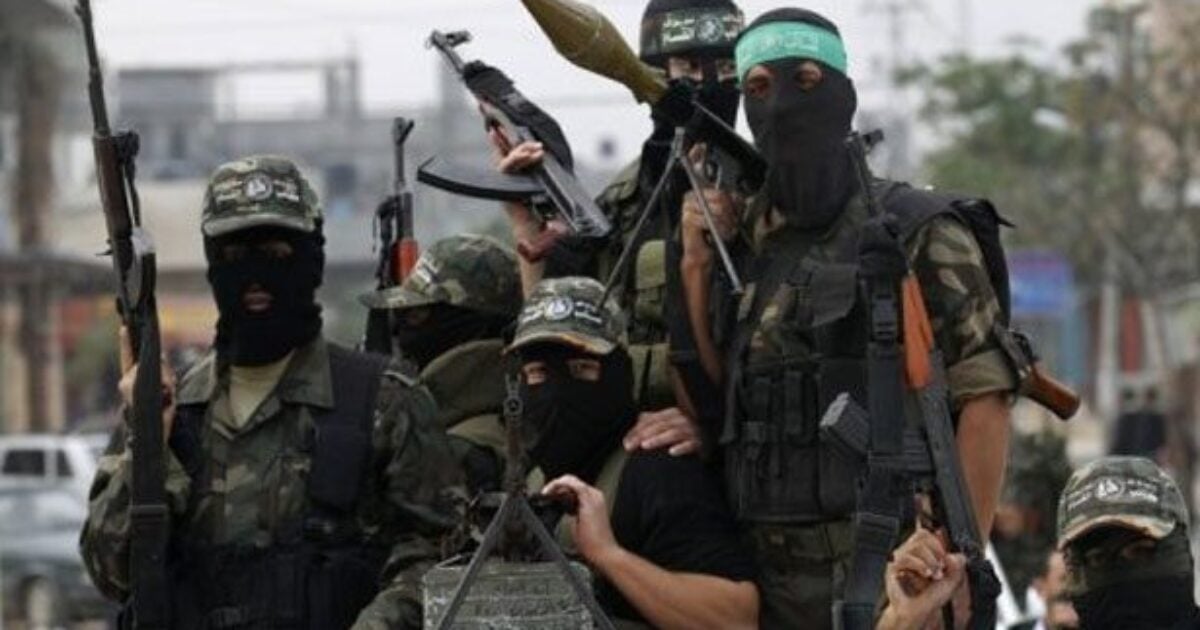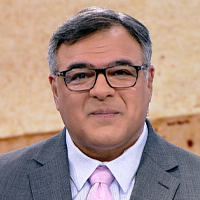People
Circles
Posts
Videos
Welcome to The Daily Wrap Up, a concise show dedicated to bringing you the most relevant independent news, as we see it, from the last 24 hours.
All Video Source Links Can Be Found Here At The Last American Vagabond: https://www.thelastamericanvagabond.com/us-gov-arming-terrorists-nations
Want to send a check to support TLAV, or just words of encouragement?
Use our new P.O. box:
Ryan Cristian
1113 Murfreesboro Rd. Ste 106-146
Franklin, Tn 37064
Get TLAV Apparel:
https://truthclothing.io/collections/tlav
https://tlavfreespeech.itemorder.com/shop/home/
Support TLAV through Autonomy:
Join Autonomy:
https://www.universityofreason.com/a/29887/QZmKjVCA
Ryan Cristián’s Objectivity Course:
https://marketplace.autonomyagora.com/objective-research
Richard Grove’s Course:
https://www.universityofreason.com/a/2147526145/QZmKjVCA
Like What You See? Help Us Stay People Funded:
https://tlavagabond.substack.com/
https://www.thelastamericanvagabond.com/donations/donation-form/
https://www.subscribestar.com/the-last-american-vagabond
https://cash.app/$TLAVagabond
https://www.buymeacoffee.com/tlavagabond
Bitcoin Donations: 3HybuDuvH4x5uJHemgc7EW4ms2nz3F8Gah
Ethereum Donations: 0x5e68B8984d9D8167dAf890588a7037Ae6Cc87d4b
Litecoin Donations: MX3T2kYvzfD4mNS4VNSyXFgY4abhUJC5ff
Bitcoin Cash Donations: qqsef23980qu5nlk2dj7s7ezwedl4fmy2gl2mxp9dp
Support The Last American Vagabond by Subscribing here:
http://www.feedblitz.com/f/?Sub=906867
The Last American Vagabond Links:
Sovern: https://sovren.media/u/tlavagabond/
Rumble: https://rumble.com/user/TheLastAmericanVagabond
Odysee: https://odysee.com/@TLAVagabond:5
Rokfin: https://www.rokfin.com/TLAVagabond
Minds: https://www.minds.com/TLAVagabond
Bitchute: https://www.bitchute.com/channel/24yVcta8zEjY/
Telegram: https://t.me/TLAVagabond
VK: https://vk.com/id504366611
Twitter: https://twitter.com/TLAVagabond
Instagram: https://www.instagram.com/the_last_american_vagabond/
TikTok: https://www.tiktok.com/@thelastamericanvagabond
Getter: https://gettr.com/user/tlavagabond
TruthSocial: https://truthsocial.com/@TLAVagabond
Locals: https://thelastamericanvagabond.locals.com/
Facebook: https://www.facebook.com/Vagabond-Censored-103475109010293/
Memo: https://memo.cash/profile/1Np4Z2d25RSsQi99gKhf2cd5CAwN57jk13
MeWe: https://mewe.com/profile/5bcfb5d2a5f4e5420d7d5a2f
#TLAVPirateStreams #TheDailyWrapUp #TheLastAmericanVagabond
"Copyright Disclaimer Under Section 107 of the Copyright Act 1976, allowance is made for "fair use" for purposes such as criticism, comment, news reporting, teaching, scholarship, and research. Fair use is a use permitted by copyright statute that might otherwise be infringing. Non-profit, educational or personal use tips the balance in favor of fair use.”
Daniel Hale released documents that came to be known as The Drone Papers once published in The Intercept. These proved during one five-month period in 2012 that nearly 90 percent of those killed in drone strikes were not the intended target. Rather, they were civilian bystanders, innocent people killed and classified as “enemies killed in action,” unless proven otherwise. He was fired and put in a "SuperMax" prison with the worst terrorists and criminals. On this episode of The Whistleblowers, John Kiriakou speaks with Ray McGovern, a former senior CIA officer and Co-founder of Veteran Intelligence Professionals for Sanity about the whistleblower Daniel Hale.
Biden promised to unite our country. Instead he betrayed us, pouring fuel on the fire of divisiveness, tearing our country apart. Biden compares those who disagree with him to racists, traitors & enemies, & has his AG target Americans as domestic terrorists. Unfit to lead.
People
Circles
Videos
Welcome to The Daily Wrap Up, a concise show dedicated to bringing you the most relevant independent news, as we see it, from the last 24 hours.
All Video Source Links Can Be Found Here At The Last American Vagabond: https://www.thelastamericanvagabond.com/us-gov-arming-terrorists-nations
Want to send a check to support TLAV, or just words of encouragement?
Use our new P.O. box:
Ryan Cristian
1113 Murfreesboro Rd. Ste 106-146
Franklin, Tn 37064
Get TLAV Apparel:
https://truthclothing.io/collections/tlav
https://tlavfreespeech.itemorder.com/shop/home/
Support TLAV through Autonomy:
Join Autonomy:
https://www.universityofreason.com/a/29887/QZmKjVCA
Ryan Cristián’s Objectivity Course:
https://marketplace.autonomyagora.com/objective-research
Richard Grove’s Course:
https://www.universityofreason.com/a/2147526145/QZmKjVCA
Like What You See? Help Us Stay People Funded:
https://tlavagabond.substack.com/
https://www.thelastamericanvagabond.com/donations/donation-form/
https://www.subscribestar.com/the-last-american-vagabond
https://cash.app/$TLAVagabond
https://www.buymeacoffee.com/tlavagabond
Bitcoin Donations: 3HybuDuvH4x5uJHemgc7EW4ms2nz3F8Gah
Ethereum Donations: 0x5e68B8984d9D8167dAf890588a7037Ae6Cc87d4b
Litecoin Donations: MX3T2kYvzfD4mNS4VNSyXFgY4abhUJC5ff
Bitcoin Cash Donations: qqsef23980qu5nlk2dj7s7ezwedl4fmy2gl2mxp9dp
Support The Last American Vagabond by Subscribing here:
http://www.feedblitz.com/f/?Sub=906867
The Last American Vagabond Links:
Sovern: https://sovren.media/u/tlavagabond/
Rumble: https://rumble.com/user/TheLastAmericanVagabond
Odysee: https://odysee.com/@TLAVagabond:5
Rokfin: https://www.rokfin.com/TLAVagabond
Minds: https://www.minds.com/TLAVagabond
Bitchute: https://www.bitchute.com/channel/24yVcta8zEjY/
Telegram: https://t.me/TLAVagabond
VK: https://vk.com/id504366611
Twitter: https://twitter.com/TLAVagabond
Instagram: https://www.instagram.com/the_last_american_vagabond/
TikTok: https://www.tiktok.com/@thelastamericanvagabond
Getter: https://gettr.com/user/tlavagabond
TruthSocial: https://truthsocial.com/@TLAVagabond
Locals: https://thelastamericanvagabond.locals.com/
Facebook: https://www.facebook.com/Vagabond-Censored-103475109010293/
Memo: https://memo.cash/profile/1Np4Z2d25RSsQi99gKhf2cd5CAwN57jk13
MeWe: https://mewe.com/profile/5bcfb5d2a5f4e5420d7d5a2f
#TLAVPirateStreams #TheDailyWrapUp #TheLastAmericanVagabond
"Copyright Disclaimer Under Section 107 of the Copyright Act 1976, allowance is made for "fair use" for purposes such as criticism, comment, news reporting, teaching, scholarship, and research. Fair use is a use permitted by copyright statute that might otherwise be infringing. Non-profit, educational or personal use tips the balance in favor of fair use.”
Daniel Hale released documents that came to be known as The Drone Papers once published in The Intercept. These proved during one five-month period in 2012 that nearly 90 percent of those killed in drone strikes were not the intended target. Rather, they were civilian bystanders, innocent people killed and classified as “enemies killed in action,” unless proven otherwise. He was fired and put in a "SuperMax" prison with the worst terrorists and criminals. On this episode of The Whistleblowers, John Kiriakou speaks with Ray McGovern, a former senior CIA officer and Co-founder of Veteran Intelligence Professionals for Sanity about the whistleblower Daniel Hale.
Biden promised to unite our country. Instead he betrayed us, pouring fuel on the fire of divisiveness, tearing our country apart. Biden compares those who disagree with him to racists, traitors & enemies, & has his AG target Americans as domestic terrorists. Unfit to lead.
Repost from @tulsigabbard
•
Biden promised to unite our country. Instead he betrayed us, pouring fuel on the fire of divisiveness, tearing our country apart. Biden compares those who disagree with him to racists, traitors & enemies, & has his AG target Americans as domestic terrorists. Unfit to lead.
Media and Politicians have spent the last seven months telling us that BLM riots which have included private and public property damage in dozens of cities is acceptable political protest. Now, suddenly, they have decided that damage to the U.S. Capitol is an act of terror. We cannot accept this use of language because words have consequences.
Posts

Anti-Jewish terror at Columbia University barricaded themselves inside an academic building on campus, upping the stakes in their conflict with the school over a pro-Palestinian encampment. The Hamas encampment movement is now full on Hamas. Are there hostages in the building? It looks like a lawless third world country not an 90K per year American Ivy League university. Here's the thing, it never ends with the Jews. They are an easy target, is all. Fair game.This is about destroying America. It should never have gotten this far. The administration's lack of response is criminal.
gellerreport.com















